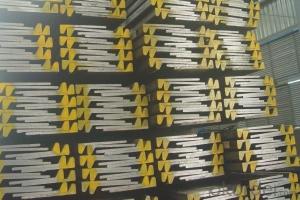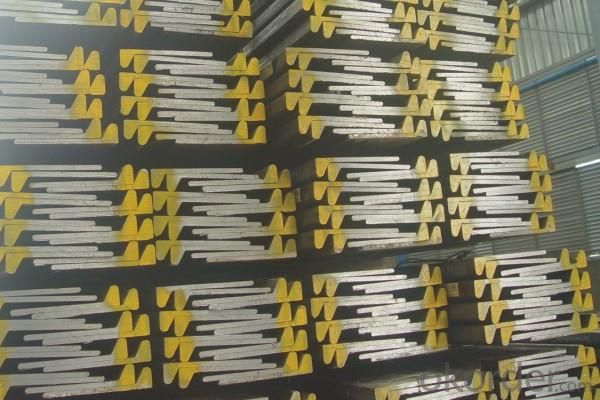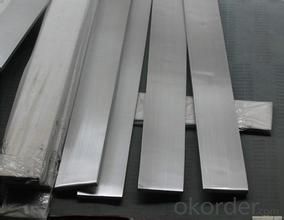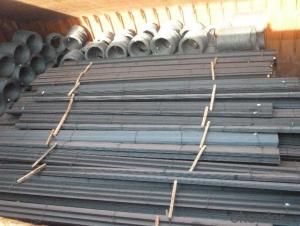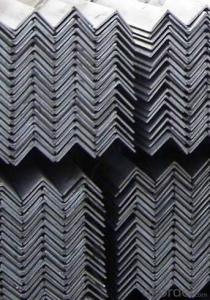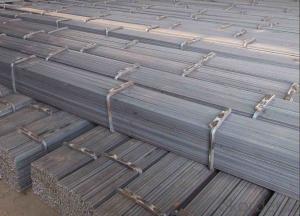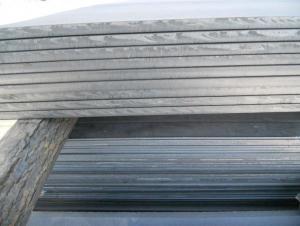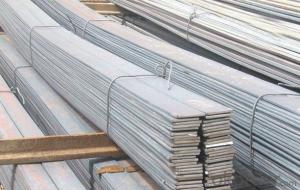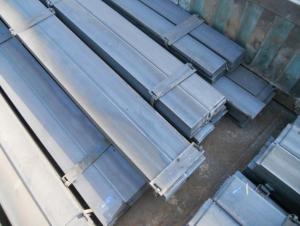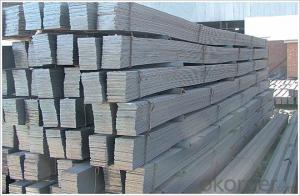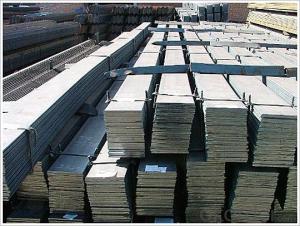Shipping Flat Bar Of Bulb Big size
- Loading Port:
- China Main Port
- Payment Terms:
- TT or LC
- Min Order Qty:
- -
- Supply Capability:
- -
OKorder Service Pledge
OKorder Financial Service
You Might Also Like
Product Description:
OKorder is offering Shipping Flat Bar Of Bulb Big size at great prices with worldwide shipping. Our supplier is a world-class manufacturer of steel, with our products utilized the world over. OKorder annually supplies products to European, North American and Asian markets. We provide quotations within 24 hours of receiving an inquiry and guarantee competitive prices.
Product Applications:
Shipping Flat Bar Of Bulb Big sizeare ideal for structural applications and are widely used in the construction of buildings and bridges, and the manufacturing, petrochemical, and transportation industries.
Product Advantages:
OKorder's Shipping Flat Bar Of Bulb Big size are durable, strong, and resist corrosion.
Main Product Features:
· Premium quality
· Prompt delivery & seaworthy packing (30 days after receiving deposit)
· Corrosion resistance
· Can be recycled and reused
· Mill test certification
· Professional Service
· Competitive pricing
Product Specifications:
Manufacture: Hot rolled
Grade: Q195 – 235
Certificates: ISO, SGS, BV, CIQ
Length: 6m – 12m, as per customer request
Packaging: Export packing, nude packing, bundled
Chinese Standard (H*W*T) | Weight (Kg/m) | 6m (pcs/ton) | Light I (H*W*T) | Weight (Kg/m) | 6m (pcs/ton) | Light II (H*W*T) | Weight (Kg/m) | 6M |
100*68*4.5 | 11.261 | 14.8 | 100*66*4.3 | 10.13 | 16.4 | 100*64*4 | 8.45 | 19.7 |
120*74*5.0 | 13.987 | 11.9 | 120*72*4.8 | 12.59 | 13.2 | 120*70*4.5 | 10.49 | 15.8 |
140*80*5.5 | 16.89 | 9.8 | 140*78*5.3 | 15.2 | 10.9 | 140*76*5 | 12.67 | 13.1 |
160*88*6 | 20.513 | 8.1 | 160*86*5.8 | 18.46 | 9 | 160*84*5.5 | 15.38 | 10.8 |
180*94*6.5 | 24.143 | 6.9 | 180*92*6.3 | 21.73 | 7.6 | 180*90*6 | 18.11 | 9.2 |
200*100*7 | 27.929 | 5.9 | 200*98*6.8 | 25.14 | 6.6 | 200*96*6.5 | 20.95 | 7.9 |
220*110*7.5 | 33.07 | 5 | 220*108*7.3 | 29.76 | 5.6 | 220*106*7 | 24.8 | 6.7 |
250*116*8 | 38.105 | 4.3 | 250*114*7.8 | 34.29 | 4.8 | 250*112*7.5 | 28.58 | 5.8 |
280*122*8.5 | 43.492 | 3.8 | 280*120*8.2 | 39.14 | 4.2 | 280*120*8 | 36.97 | 4.5 |
300*126*9 | 48.084 | 3.4 | 300*124*9.2 | 43.28 | 3.8 | 300*124*8.5 | 40.87 | 4 |
320*130*9.5 | 52.717 | 3.1 | 320*127*9.2 | 48.5 | 3.4 | |||
360*136*10 | 60.037 | 2.7 | 360*132*9.5 | 55.23 | 3 |
FAQ:
Q1: Why buy Materials & Equipment from OKorder.com?
A1: All products offered byOKorder.com are carefully selected from China's most reliable manufacturing enterprises. Through its ISO certifications, OKorder.com adheres to the highest standards and a commitment to supply chain safety and customer satisfaction.
Q2: How do we guarantee the quality of our products?
A2: We have established an advanced quality management system which conducts strict quality tests at every step, from raw materials to the final product. At the same time, we provide extensive follow-up service assurances as required.
Q3: How soon can we receive the product after purchase?
A3: Within three days of placing an order, we will begin production. The specific shipping date is dependent upon international and government factors, but is typically 7 to 10 workdays.
Q4: What makes stainless steel stainless?
A4: Stainless steel must contain at least 10.5 % chromium. It is this element that reacts with the oxygen in the air to form a complex chrome-oxide surface layer that is invisible but strong enough to prevent further oxygen from "staining" (rusting) the surface. Higher levels of chromium and the addition of other alloying elements such as nickel and molybdenum enhance this surface layer and improve the corrosion resistance of the stainless material.
Q5: Can stainless steel rust?
A5: Stainless does not "rust" as you think of regular steel rusting with a red oxide on the surface that flakes off. If you see red rust it is probably due to some iron particles that have contaminated the surface of the stainless steel and it is these iron particles that are rusting. Look at the source of the rusting and see if you can remove it from the surface.
Images:
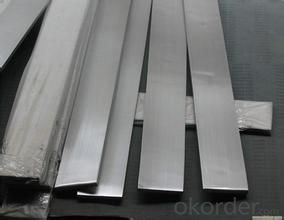
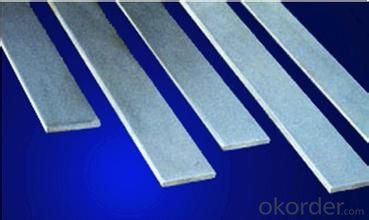
- Q: Can steel angles be used in the construction of agricultural buildings?
- Yes, steel angles can definitely be used in the construction of agricultural buildings. Steel angles are a versatile and durable building material that offer several advantages when it comes to constructing agricultural structures. Firstly, steel angles provide excellent structural support and stability. They can be used to create sturdy frameworks for the walls, roofs, and other structural components of agricultural buildings. This is particularly important in agricultural buildings, where heavy machinery and equipment is often stored, and where the structures need to withstand harsh weather conditions and potential impact from animals or other elements. Secondly, steel angles are highly resistant to corrosion and rust, which makes them ideal for agricultural buildings that are exposed to moisture, chemicals, and other potentially corrosive substances. This resistance to corrosion ensures that the structure remains strong and durable over time, reducing the need for frequent maintenance and repairs. Furthermore, steel angles are available in various sizes and shapes, allowing for flexibility in design and construction. They can be easily customized and cut to fit specific building requirements, making them adaptable to various agricultural building designs. Additionally, steel angles can be easily welded or bolted together, making the construction process more efficient and cost-effective. Lastly, steel angles are a sustainable and environmentally friendly choice for agricultural buildings. Steel is a recyclable material, meaning that it can be reused or repurposed once the building has reached the end of its lifespan. This reduces the environmental impact and promotes sustainability in the construction industry. In conclusion, steel angles can be effectively used in the construction of agricultural buildings due to their structural strength, corrosion resistance, design flexibility, and sustainability.
- Q: How do you prevent buckling of steel angles under compressive loads?
- To prevent steel angles from buckling under compressive loads, there are several steps that can be taken: 1. Increasing the section modulus: By broadening or thickening the steel angle, its ability to resist bending can be improved, thus enhancing its resistance to compressive loads without buckling. 2. Increasing the moment of inertia: The moment of inertia, which determines a cross-sectional shape's resistance to bending, can be increased by either adding more material or using a different shape with a greater moment of inertia. This makes the steel angle stiffer and less prone to buckling. 3. Providing lateral support: Lateral support can be provided by incorporating bracing or stiffeners into the steel angle. This helps distribute the compressive load and prevents buckling. The bracing or stiffeners should be designed to withstand the applied loads and prevent any local distortions or deformations. 4. Using thicker or higher strength steel: Thicker steel has a higher resistance to bending, while higher strength steel can bear greater stresses before reaching its yield point. By utilizing thicker or higher strength steel, the steel angle can withstand higher compressive loads without buckling. 5. Properly designing and installing connections: The connections between the steel angle and other structural components should be carefully designed and installed. Sufficient connection details should be provided to ensure proper transfer of the compressive load and adequate support for the steel angle. 6. Taking the effective length factor into consideration: The effective length factor is a parameter that considers the buckling behavior of a member. By accurately incorporating the effective length factor into design calculations, the risk of buckling can be minimized. 7. Conducting a comprehensive structural analysis: It is crucial to conduct a structural analysis to determine the expected compressive loads and potential buckling modes. By utilizing appropriate software or calculations, the necessary measures can be implemented to prevent buckling. In conclusion, preventing buckling of steel angles under compressive loads requires a combination of design considerations, material selection, and proper installation techniques. By following these measures, the structural integrity and safety of steel angles can be ensured in various applications.
- Q: Are steel angles available in non-standard dimensions?
- Yes, steel angles are available in non-standard dimensions.
- Q: Can steel angles be used in the construction of power plants?
- Yes, steel angles can be used in the construction of power plants. They provide structural support and stability, making them suitable for various applications such as framing, bracing, and supporting equipment and machinery in power plants.
- Q: Can steel angles be used for HVAC ductwork support?
- Yes, steel angles can be used for HVAC ductwork support. Steel angles provide structural support and stability, making them suitable for holding and securing ductwork in place.
- Q: What are the different methods of surface powder coating for steel angles?
- There are several methods of surface powder coating for steel angles, including electrostatic spray, fluidized bed, and flame spraying. Electrostatic spray involves applying a charged powder to the steel angle, which then adheres to the surface due to the electrostatic attraction. Fluidized bed coating involves dipping the steel angle into a fluidized bed of powder particles, which then adhere to the surface. Flame spraying is a process in which the powder is melted and sprayed onto the steel angle using a high-velocity flame. Each method has its own advantages and is chosen based on the specific requirements of the coating application.
- Q: Can steel angles be used for ladder rungs?
- Yes, steel angles can be used for ladder rungs. Steel angles are often used in construction and fabrication for their strength and durability. They can provide a solid and secure surface for climbing on ladders. However, it is important to take into consideration the specific requirements and regulations for ladder rungs, such as the dimensions, spacing, and anti-slip properties. These factors ensure the safety and stability of the ladder for users. It is recommended to consult relevant safety guidelines and standards before using steel angles as ladder rungs.
- Q: How much is a galvanized angle L50*50*5*2500
- The ordinary angle iron is 40-45 yuan one
- Q: Can steel angles be used in HVAC ductwork?
- Yes, steel angles can be used in HVAC ductwork. Steel angles provide structural support and reinforcement to the ductwork, ensuring its stability and strength. They can be used to reinforce corners, joints, and connections, adding rigidity to the overall system. Steel angles are commonly used in commercial and industrial HVAC systems to enhance durability and longevity.
- Q: What are the different types of steel angles used in storage racks?
- Storage racks commonly utilize various types of steel angles to ensure strength and stability, facilitating efficient storage and organization of items. 1) The most frequently employed steel angle in storage racks is the equal angle. It possesses identical sides and serves as the primary support beam in the rack's structure. The balanced weight distribution and stability it offers make it ideal for this purpose. 2) Unequal angles, as the name implies, have varying side lengths. These angles find application in storage racks that necessitate specific weight distribution or load-bearing requirements. The longer side of the unequal angle provides additional support for heavier items or different storage configurations. 3) Slotted angles are versatile, allowing convenient adjustment and customization of storage rack systems. They feature slots along their length, enabling the addition of shelves, dividers, or other accessories as required. Slotted angles are commonly found in warehouses or industrial settings where frequent reconfiguration of the rack system is necessary. 4) Perforated angles contain holes punctured along their length, offering improved ventilation and visibility for stored items. They are often employed in storage racks for items that require airflow or in retail settings where product visibility holds significance. 5) Corner angles, on the other hand, are L-shaped steel angles used to reinforce and strengthen the corners of storage racks. They provide additional support and stability, preventing the rack from collapsing or tipping over when heavy items are stored on the shelves. Ultimately, the choice of steel angle for storage racks relies on specific requirements such as load-bearing capacity, customization options, ventilation needs, and visual appeal. By selecting the appropriate steel angle, storage racks can be optimized for maximum efficiency and durability.
Send your message to us
Shipping Flat Bar Of Bulb Big size
- Loading Port:
- China Main Port
- Payment Terms:
- TT or LC
- Min Order Qty:
- -
- Supply Capability:
- -
OKorder Service Pledge
OKorder Financial Service
Similar products
Hot products
Hot Searches
Related keywords
